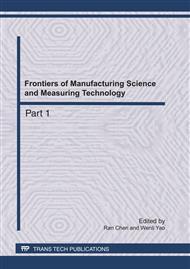p.945
p.949
p.953
p.958
p.964
p.968
p.973
p.978
p.982
Simulation and Analysis of Hybrid Electric Vehicle Powertrain
Abstract:
By optimizing design and reasonable matching, internal combustion engine can operate under the condition of high efficiency to improve fuel efficiency and reduce exhaust emissions. This paper use reverse energy flow simulation method, transmission of speed and torque as the main line, based on the establishing of engine, motor, battery and other models, analyzing HEV parameter and the request of driving force, motor and battery. Regarding one kind of Hybrid Electric Vehicle as the research object, the mathematics model of power and economic performance was established. A PHEV performance simulation software was developed by using MATLAB/ SIMULINK. The demand of Hybrid Electric Vehicle to the power of motor and battery were analyzed on the given Driving Cycle.
Info:
Periodical:
Pages:
964-967
Citation:
Online since:
May 2011
Authors:
Keywords:
Price:
Сopyright:
© 2011 Trans Tech Publications Ltd. All Rights Reserved
Share:
Citation:


